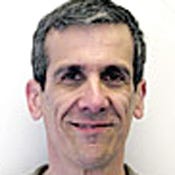How Finance Stays Fit
Five business-technology execs outline strategies that help their companies navigate a fast-changing, competitive market.

Bob Shinn
A Symphony Of Storage
At State Street Global Advisors, the investment-management subsidiary of State Street Corp., a change in portfolio management is under way. The switch from passive to active portfolio management means trades are made more frequently but in smaller blocks, in an effort to capitalize on small swings in stock prices. "With active portfolio management, the number of trades and the number of transactions that need to be stored change dramatically," principal Bob Shinn says. "We want to align those attributes to storage."
Shinn has the responsibility of overseeing the business' rapidly evolving storage architecture, technology that isn't just a collection of disks, tapes, controllers, drives, and software, he says. It's an ensemble. "It's much like composing a symphony," he says. "If individual technologies are what makes your company run, then you need to compose and conduct them in a way that they add value." When it comes to storage, that means avoiding situations where the technology becomes a bottleneck, hindering portfolio managers' ability to support the move to active portfolio management. "We want our business users focused on portfolio management, not on storage," Shinn says.
Using Shinn's orchestral metaphor, the goal isn't to add instruments but to create new sounds. "We have an agnostic storage infrastructure; the key technology pieces stay the same," he says.
"It's how you configure them that changes."
Shinn, 34, has put his virtuosity on display since joining State Street five years ago after working as a quality-assurance manager at BankBoston and several other companies. He has managed storage under budget and with zero downtime for State Street Global Advisors, which manages $1.4 trillion in assets.
Shinn also is getting closer to State Street's business units and understanding their storage requirements. That knowledge is needed in order to maximize efficiency from State Street's storage plant: 16 disk arrays containing 250 terabytes of usable disk space, four tape libraries containing 1 petabyte of storage, 350 active servers, and 5,000 logical paths, or connections between different severs and storage arrays. Once an application has been defined as requiring high availability, Shinn designs a solution capable of failing over in
the event of any disaster. The ultimate goal is to eliminate failover completely.
"We want to process in continuous mode, so the failover isn't a failover, it's just an ongoing load balancing between the primary and backup sites," Shinn says.
To get to continuous operations, State Street Global Advisors has invested in dense wavelength division multiplexing, a technology that allows as many as 80 separate channels of data to be carried over a single fiber cable. "That type of connectivity provides orders of magnitude reductions in latency and increases bandwidth, prerequisites for continuous operations," he says.
Shinn's goal is to create a storage infrastructure that's suited to the increasingly volatile business of asset management. From an IT perspective, State Street Global Advisors needs to be able to enter new geographical markets as well as get into different types of financial instruments, Shinn says. "We never want IT to hinder a business decision."
About the Author(s)
You May Also Like
How to Amplify DevOps with DevSecOps
May 22, 2024Generative AI: Use Cases and Risks in 2024
May 29, 2024Smart Service Management
June 4, 2024







